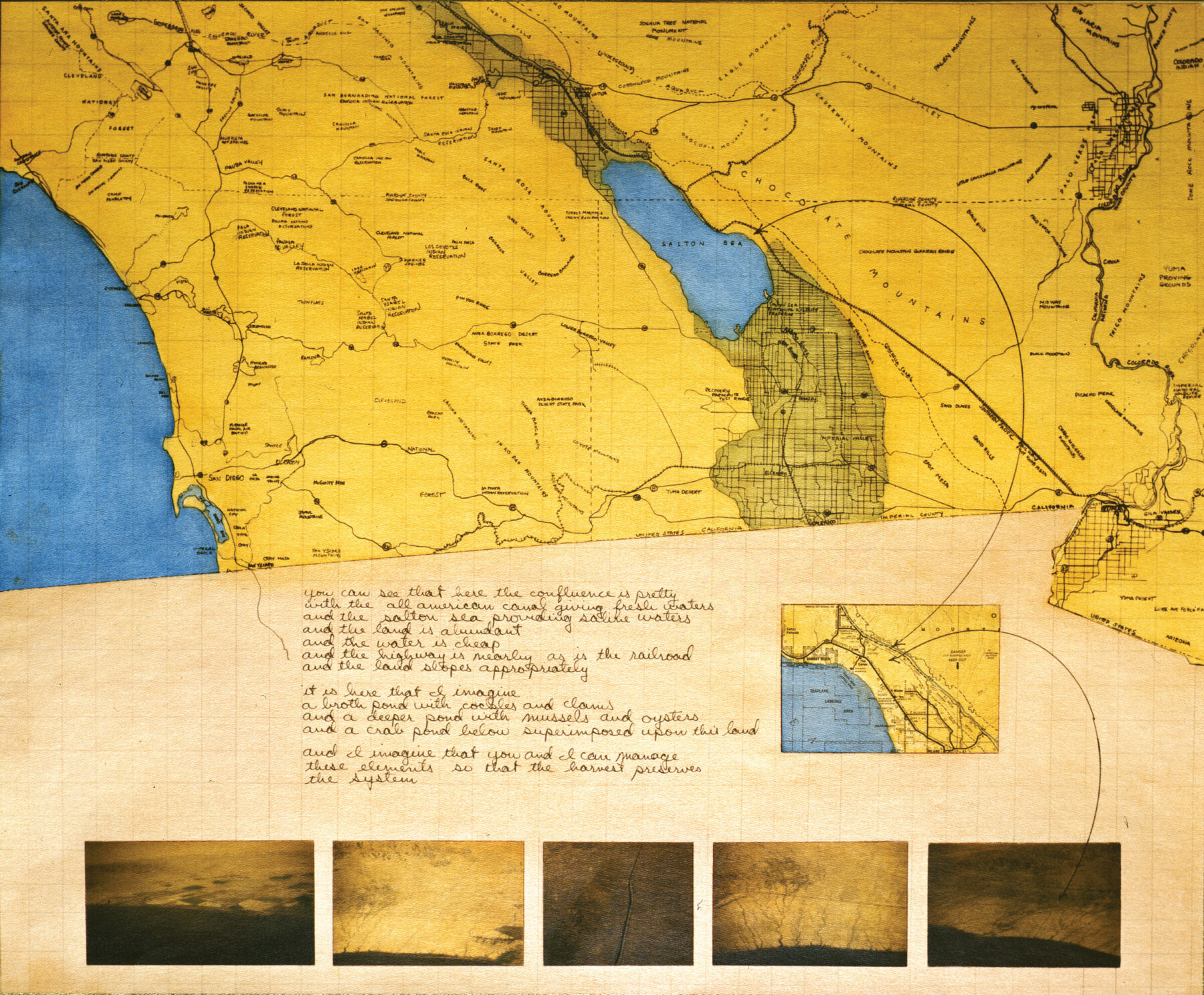Remembering the Harrisons

We are saddened by the news that pioneering eco-artist Newton Harrison passed away on September 4, 2022. Born in 1932, Newton graduated from Yale in 1965 with both a bachelor’s and master’s degree in fine art. He secured his first faculty position as assistant professor at the University of New Mexico (UNM), before moving to La Jolla, California, in 1967 to cofound the Visual Arts Department at the University of California, San Diego (UCSD). Helen Mayer Harrison (1927–2018), who was known for her activism and research-based work in literature at UNM, chose to dedicate herself to the Harrison collaboration when they made a map of endangered species around the world for the Fur and Feathers exhibit at the Museum of Crafts in New York City in 1969. The Harrisons, as they became known, then collectively made the decision to do no work that did not benefit ecosystems. Their collaboration lasted nearly fifty years and led to the first husband-and-wife shared professorship at UCSD.
As part of the Getty Foundation’s Pacific Standard Time: 2024 initiative, the La Jolla Historical Society in San Diego, in collaboration with three other venues, will present Helen and Newton Harrison: California Work, a groundbreaking four-part exhibition about this pioneering couple, offering a critical reappraisal of their California-based works. The exhibition will highlight the Harrisons’ extraordinary art and science collaboration, which ignited the field of ecological art and fostered it for decades. Many artists will continue to be inspired by them, as artist and environmentalist Lillian Ball affirms: “They were the forces of nature whose ongoing influence will be felt throughout generations.”
—Tatiana Sizonenko, art historian and curator
